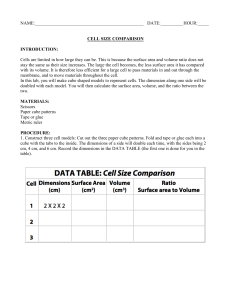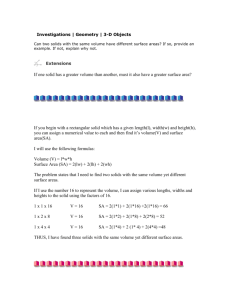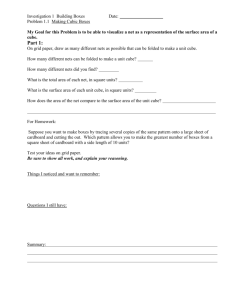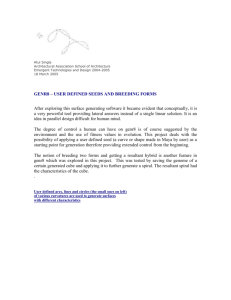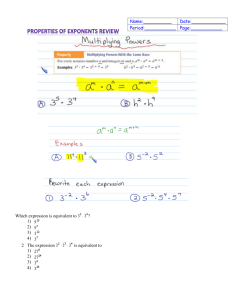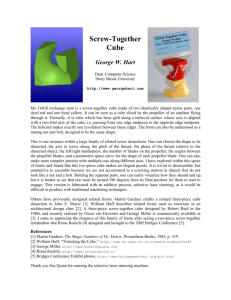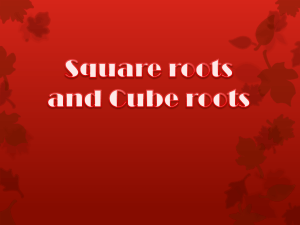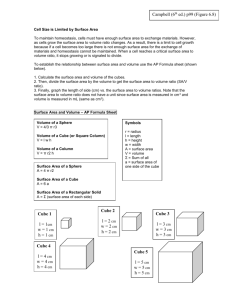Paper Cube Activity
advertisement
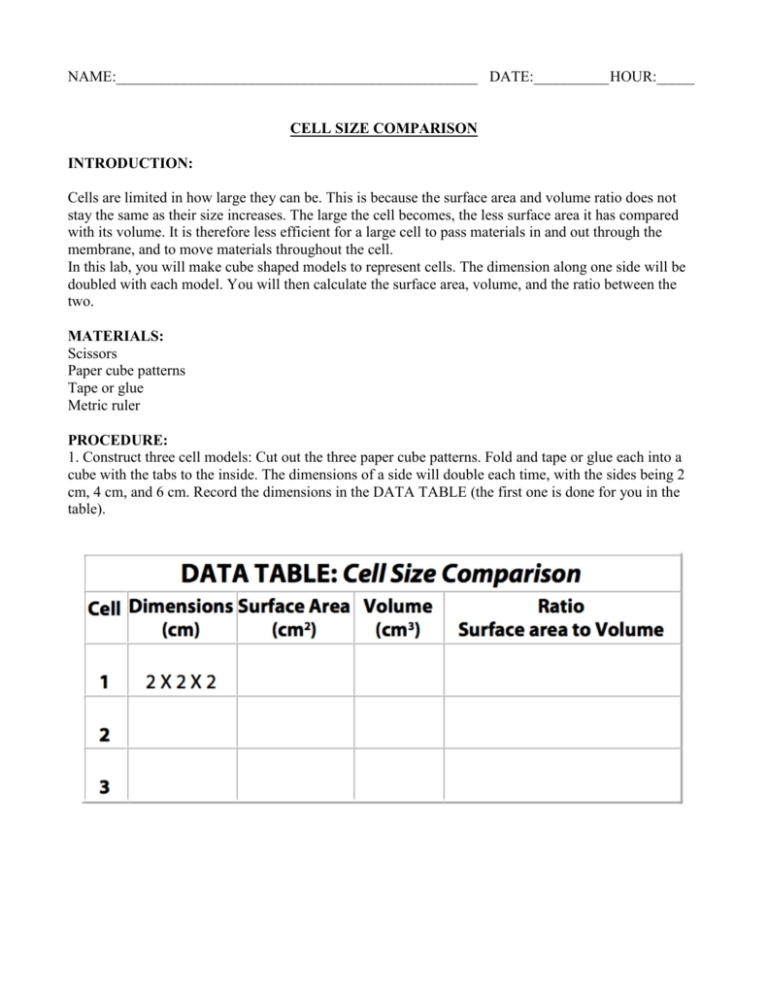
NAME:________________________________________________ DATE:__________ HOUR:_____ CELL SIZE COMPARISON INTRODUCTION: Cells are limited in how large they can be. This is because the surface area and volume ratio does not stay the same as their size increases. The large the cell becomes, the less surface area it has compared with its volume. It is therefore less efficient for a large cell to pass materials in and out through the membrane, and to move materials throughout the cell. In this lab, you will make cube shaped models to represent cells. The dimension along one side will be doubled with each model. You will then calculate the surface area, volume, and the ratio between the two. MATERIALS: Scissors Paper cube patterns Tape or glue Metric ruler PROCEDURE: 1. Construct three cell models: Cut out the three paper cube patterns. Fold and tape or glue each into a cube with the tabs to the inside. The dimensions of a side will double each time, with the sides being 2 cm, 4 cm, and 6 cm. Record the dimensions in the DATA TABLE (the first one is done for you in the table). CALCULATIONS: 2. Calculate the total surface area for each cell model by the following formula: Surface area = (length x width) x 6 sides Record the surface areas in the DATA TABLE. 3. Calculate the volumes for each cell model by the following formula: Volume = length X width X height Record the volumes in the DATA TABLE. 4. Calculate the surface area-to-volume ratio for each cell model by the following formula: Record the ratio values in the DATA TABLE. These ratios show how many times larger the surface area is as compared with the volume. Notice that it becomes less than one very quickly. QUESTIONS: 1. Which model has the largest surface area? 2. Which model has the largest volume? 3. Which model has the largest surface area to volume ratio? 4. To maintain life, and carry out cellular functions, materials must be able to move into and out of the cell. Also, material needs to be able to move within the cell. What might be the advantage of having a large surface area? 5. What might be the disadvantage of having a large volume? Patterns for Cell Size Comparison For cube shaped printouts in the correct sizes, go to the following website and print the cube shaped templates. http://uscgpa.wikispaces.com/file/view/Cell_Size_Activity.pdf Cut out all three-box patterns. Fold and glue or tape tabs to make each into a cube. Take measurements of each cube (in centimeters), record in a data table. Instructional Notes: Paper Cube Activity Pre-activity Discussion Ask students: Can a cell get too large? What would happen if a cell got to large? Activity Performance Notes This is an activity to introduce students to the connection between surface area and volume. This will allow a lead into a lab with cell models to illustrate the movement of materials into and out of cells in relation to surface area and volume ratios. Post-activity Discussion What is the connection between surface area and volume? What happens when the ratio surface area to volume ratio decreases? How does this impact the cell? What are some ways cells could alter their surface area to volume ratio in order to be most efficient?
